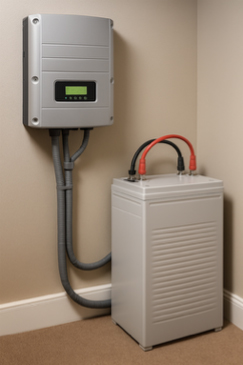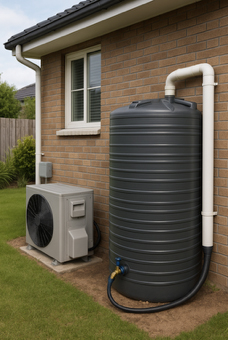
Living in South Africa, one cannot escape the reality of scheduled blackouts known as Load Shedding. When the traffic lights go dark, even large intersections turn into makeshift four-way stops, where cars pass through in order of arrival. At first, I imagined chaos. Yet to my surprise, drivers handle the situation with calm and a sense of order.


Battery Systems and Expatriate Life
For homes and offices, backup solutions are now the norm. Instead of noisy generators, many rely on battery-and-inverter systems that automatically switch on during outages. These are far more suitable for urban environments. Still, for expatriates who are only posted temporarily, the burden of choosing, installing, and maintaining such systems can be overwhelming. That is why many foreigners choose apartments or condominiums that already come equipped with backup facilities.
The challenges go beyond electricity. Water outages are also common, and in single-family houses a private water tank is essential. These added “infrastructure costs” steadily push up household expenses, causing some families to hold back on large purchases such as new cars.
Sasol’s MRG Project: Buying Time at the Gas Cliff
South Africa’s natural gas supply from Mozambique’s Pande and Temane fields is expected to run dry around 2027–2028. Parliament itself has acknowledged that supplies will decline toward 2028, and the so-called “Gas Cliff” is now a widely recognized concern.
In response, Sasol has launched the Methane-Rich Gas (MRG) project, producing gas derived from coal. This plan is intended to extend industrial gas supply by up to 24 months beyond June 2028, effectively pushing the cliff back toward 2030. It is not a full replacement, but it provides a temporary bridge.
South Africa’s FSRU Initiatives
At the same time, long-term alternatives are being pursued through LNG imports and Floating Storage and Regasification Units (FSRUs).
In February 2025, the state-owned port authority (TNPA) signed a 25-year agreement with a private operator, ZET, to establish the country’s first LNG import terminal at Richards Bay. Although earlier FSRU plans were shelved, this represents a fresh start under a new framework.
Meanwhile, in neighboring Mozambique, the Beluluane Gas Company (BGC) has secured a concession to build an FSRU and pipelines at the Port of Matola. South Africa’s pipeline operator ROMPCO has even examined a “reverse flow” option, whereby LNG regasified in Matola could be piped directly back into South Africa. This would create a practical new lifeline for energy security.

U.S. LNG and Political Pressure
Adding another layer, negotiations are underway over potential long-term LNG purchases from the United States. According to reports, South Africa has floated a proposal to import 75–100 million cubic meters per year over a 10-year period, linked to trade talks and pressure over tariffs. If realized, this could bolster both the Richards Bay and Matola FSRU projects, providing momentum for broader infrastructure investment.
Closing Thoughts
For households, coping with blackouts and water outages raises living costs. At the national level, the looming “Gas Cliff” has spurred multiple bridging strategies: Sasol’s MRG initiative, FSRU development, and the prospect of U.S. LNG imports. Living here, one quickly learns that daily life and national energy policy are closely intertwined.
And while still from a distance, these emerging efforts in alternative energy supply are also areas where we at MOL feel a growing interest — domains where, in time, we hope to play a role.
